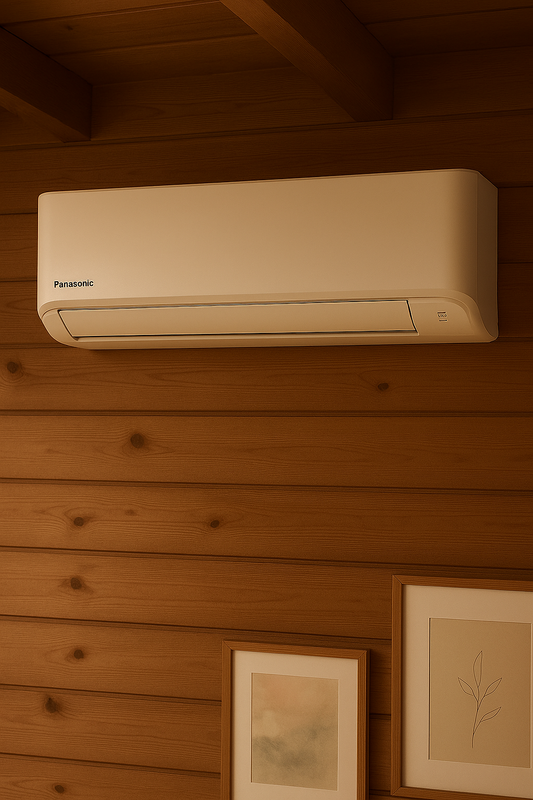Installation av bergvärmepump
Installation av en bergvärmepump är en viktig process för att dra nytta av förnybar energi och minska beroendet av fossila bränslen. I denna artikel kommer vi att utforska stegen och fördelarna med att installera en bergvärmepump.
1. Definition och bakgrund
En bergvärmepump är en uppvärmnings- och kylsystem som använder den konstanta temperaturen i marken för att reglera inomhusklimatet. Genom att utnyttja den naturliga värmen i marken kan bergvärmepumpar effektivt värma upp byggnader under vintermånaderna och kyla dem under sommaren.
2. Fördelar och användningsområden
Installation av en bergvärmepump erbjuder flera fördelar, inklusive minskade energikostnader, minskad miljöpåverkan och långsiktig hållbarhet. Bergvärmepumpar kan användas i både bostäder och kommersiella fastigheter och passar speciellt bra för nybyggnation eller vid renovering av uppvärmningssystem.
3. Relaterade tekniker, begrepp eller variationer
Det finns flera olika typer av värmepumpar, inklusive luft/vatten-värmepumpar och sjö/vatten-värmepumpar. Dessa använder olika källor för att extrahera värme och kan vara lämpliga alternativ beroende på fastighetens specifika behov och förutsättningar.
4. Vanliga frågor (FAQ)
-
Hur djupt måste man borra för att installera en bergvärmepump?
Vanligtvis krävs en borrning på mellan 100-200 meter för att nå den optimala marktemperaturen för en bergvärmepump.
-
Vad är den förväntade livslängden för en bergvärmepump?
En väl underhållen bergvärmepump kan ha en livslängd på upp till 25 år eller mer.
-
Vilka kostnader är förknippade med installation av en bergvärmepump?
Kostnaderna varierar beroende på fastighetens storlek, markförhållanden och val av pump. Generellt sett kan kostnaderna för installation av en bergvärmepump vara högre än för konventionella värmesystem, men de långsiktiga besparingarna kan vara betydande.
5. Sammanfattning
Installation av en bergvärmepump är en investering i både energieffektivitet och hållbarhet. Genom att dra nytta av markens naturliga värme kan bergvärmepumpar erbjuda långsiktiga fördelar för både fastighetsägare och miljön.
6. Installation Process
The installation process of a ground source heat pump involves several key steps. Firstly, a site survey is conducted to assess the geological and geotechnical conditions of the location. This information is crucial for determining the depth of the boreholes and the type of ground collector to be used. Subsequently, the boreholes are drilled, and the ground loop is installed. The heat pump unit is then connected to the ground loop and the heating/cooling distribution system within the building. Proper testing and commissioning are carried out to ensure the system operates efficiently.
7. Energy Efficiency and Cost Savings
Bergvärmepumpar are known for their high energy efficiency, which translates to significant cost savings over the system's lifespan. By harnessing renewable energy from the ground, these heat pumps can substantially reduce heating and cooling expenses, making them an attractive investment for property owners seeking long-term financial benefits.
8. Environmental Impact
The adoption of ground source heat pumps contributes to a reduced carbon footprint and lowers greenhouse gas emissions. By utilizing the Earth's natural heat, bergvärmepumpar mitigate the reliance on traditional heating fuels, thereby promoting environmental sustainability and combating climate change.
9. Regulatory Incentives and Rebates
In many regions, there are government incentives and rebates available to encourage the installation of renewable energy systems such as ground source heat pumps. These incentives can offset a portion of the upfront costs, making the transition to bergvärmepumpar more financially feasible for property owners.
10. Case Study: Residential Application
In a residential setting, the installation of a ground source heat pump resulted in a 40% reduction in annual heating expenses for a typical household. Additionally, the property's carbon emissions were decreased by 50%, showcasing the tangible benefits of adopting this sustainable heating and cooling solution.
11. Maintenance and Servicing
Regular maintenance and servicing are essential for ensuring the optimal performance and longevity of a ground source heat pump. This includes tasks such as inspecting the ground loop for leaks, checking the refrigerant levels, and cleaning or replacing filters. By adhering to a maintenance schedule, property owners can prevent potential issues and maximize the efficiency of their bergvärmepumpar.
12. Geothermal Heat Exchange
The process of geothermal heat exchange within a ground source heat pump system involves transferring heat to or from the ground through the circulation of a heat transfer fluid in the ground loop. This exchange facilitates the absorption of heat from the ground for heating purposes and the dissipation of heat into the ground for cooling, contributing to the overall energy balance of the system.
13. Hybrid Heating Systems
Hybrid heating systems combine a ground source heat pump with an additional heating source, such as a gas boiler or solar thermal panels. This hybrid approach provides flexibility and redundancy in heating operations, allowing property owners to optimize energy usage based on varying conditions and energy costs, thereby enhancing overall system efficiency and reliability.
14. Noise Considerations
When planning the installation of a ground source heat pump, it's important to consider potential noise emissions from the system, especially in residential settings. Proper system design and equipment selection can mitigate noise levels, ensuring minimal impact on occupants and neighboring properties, and promoting a harmonious living environment.



